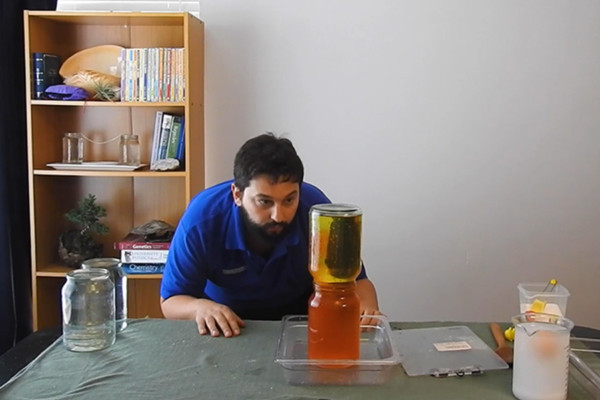
About Scitech
Scitech is a not-for-profit organisation proudly supported by the Western Australian Government through the Department of Jobs, Tourism, Science and Innovation
Data shows us that sea levels are rising, but what exactly is causing this? Find out why through these experiments you can do at home — you might be surprised.
Arctic sea ice plays a significant role in maintaining the Earth’s climate. Its reflective surface bounces sunlight back into space, helping to moderate global warming.
Records show that the Arctic sea ice is declining. As sea ice melts, more water is exposed to the Sun. Water absorbs more sunlight than ice does, which quickens further melting.
However, the state of sea ice doesn’t change the sea level. That’s right — melting sea ice does not cause sea levels to rise.
Sounds impossible? Let’s experiment to find out why this is.
You can also download our worksheet to help you with these experiments.
For this experiment, we’re setting up an ocean environment and using ice cubes to represent the Arctic sea ice.
What you’ll need:
Optional: blue food colouring, rocks and plastic animals to bring your ocean environment to life.
Instructions
You might also like to mark the depth on the side of your container – but check with your parents first!
You should be getting different results from the two experiments. Do you know why? Before we answer that, we’re going to do one more experiment.
Let’s keep experimenting to investigate one more factor that could be influencing changes in ocean levels – the temperature!
You will need a thermometer to do this experiment. Make sure you ask for help before heating up your water, and don’t carry the hot water by yourself.
Keep using the same container you used in Experiment 1 with the same water.
What happens to the water level as the temperature rises?
Rising sea levels are one of the clearest signs of global warming. It’s also one of the biggest problems that global warming is causing.
Using the results from your experiments, can you identify the two main causes of sea levels rising? What did we see?
In the experiments, we saw that:
What do these two things have in common?
The answer is HEAT.
As our planet becomes warmer, land ice melts and flows into the oceans. More water in the oceans makes sea levels higher.
And as water becomes warmer, it expands (gets bigger) and increases in volume. This is called thermal expansion.
And now we can answer our original question: If melting sea ice is not changing sea levels, then what is?
The answer is… rising global temperatures.
But hold up! If that’s the answer, then why is melting Arctic sea ice so bad?
Arctic sea ice plays an important role in moderating global warming. Its bright surface reflects sunlight back into space to prevent the ocean from absorbing extra solar energy (which would raise temperatures even further). It also plays a role in the movement of ocean currents. And of course, sea ice is an important habitat for animals like the polar bear.
Looking for more activities to do at home?
Upon clicking the "Book Now" or "Buy Gift Card" buttons a new window will open prompting contact information and payment details.